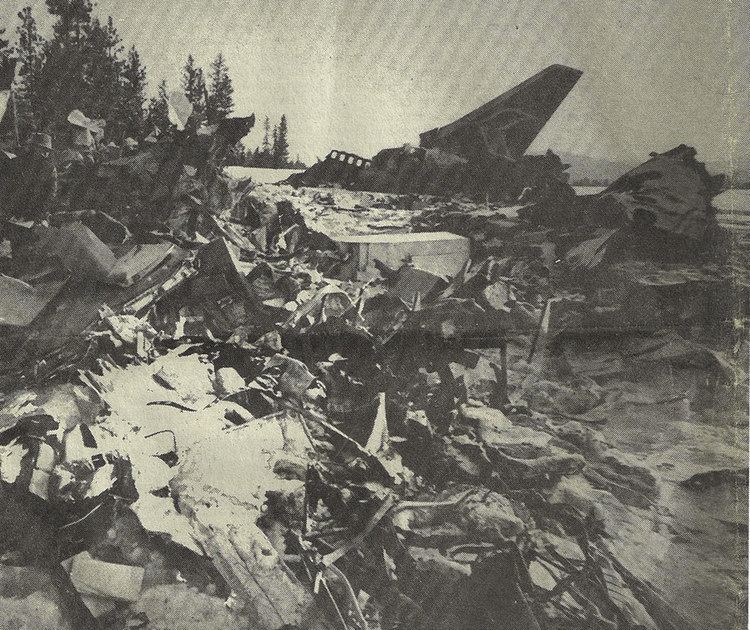Passengers 44 Fatalities 42 Date 11 February 1978 Passenger count 44 | Crew 5 Survivors 7 Number of deaths 42 Survivor 7 | |
 | ||
Summary Runway incursion, thrust reverser deployment during go-around Destination West Kootenay Regional Airport Similar 1978 LAV HS 748 accident, 1978 Balkan Bulgarian, 1978 Iranian Chinook, Pacific Western Airlines Fl, 1978 Finnish Air Force DC | ||
On 11 February 1978, Pacific Western Airlines Flight 314, a Boeing 737-200 crashed at Cranbrook/Canadian Rockies International Airport, near Cranbook, British Columbia, Canada, killing 42 of the 49 people on board.
Contents
The scheduled flight from Edmonton International Airport to Castlegar Airport via Calgary, Alberta and Cranbrook, British Columbia crashed after its thrust reversers did not fully stow following an aborted landing to avoid a snowplow on the runway. Calgary air traffic control was considerably in error in its calculation of the Cranbrook arrival time and the flight crew did not report while passing a beacon on final approach.
The investigation was conducted by the Aviation Safety Investigation Division of Transport Canada and audited by the Aircraft Accident Review Board.
Accident sequence
Cranbook is an uncontrolled airport, but it is in controlled airspace. Therefore there was no legal requirement to get permission for landing after clearance for the approach was given. At the time of accident, it was snowing with visibility of 3/4-mile. Snowplough operator was informed that estimated time of Flight 314 arrival would be 2000Z. Flight 314 touched down at 1955Z, approximately 800 feet from the runway threshold. Reverse thrust was engaged. Almost immediately, reverse thrust was cancelled and a go-around was attempted. The aircraft became airborne prior to the runway 2000 foot point, and flew over the snowplough at 50 to 70 feet of altitude.
The aircraft climbed to 300–400 feet above the airfield, banked steeply to the left, and side-slipped into the ground. At impact, the left thrust reverser was fully deployed and the right thrust reverser was nearly stowed. Left engine was near idle power, right engine was developing power, and there was full right rudder and aileron. Gear was down and flaps were at cca 20 degrees.
Boeing simulations showed that aircraft was controllable with one engine at idle reverse and the other at full forward thrust in gear up, flaps 15 configuration. With flaps 25 and gear down, it was not possible to maintain level flight.
The go-around would have been successful if the left engine thrust reverse doors had not been deployed.
Thrust reverser system design
Boeing 737 was designed such that when in air (as detected by weight on main gear) the thrust reverser system is de-energized. It then either remains at its last achieved position, or is opened by aerodynamic forces if it was opened by at least 2 inches.
Boeing 737 manual states that go-around should not be attempted after reverse thrust was initiated.
Co-pilot attempted to operate left engine thrust reverser override switch, that would allow the thrust reverser system to stow the reverser in flight.
